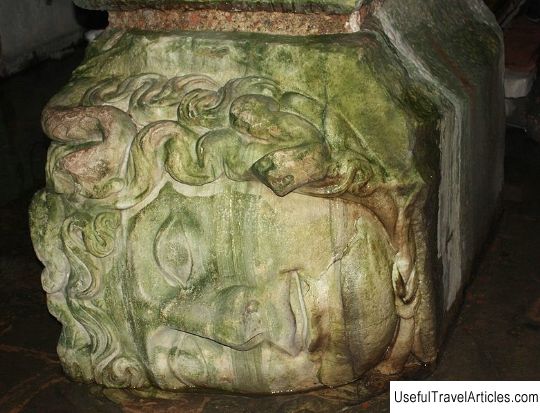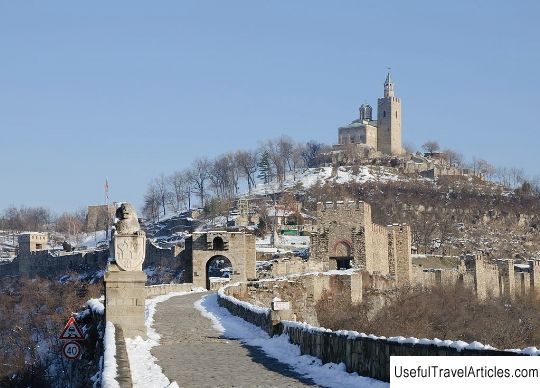Cistern Yerebatan (Yerebatan Sarnici) description and photos - Turkey: Istanbul
Rating: 8,6/10 (2390 votes) 
Yerebatan Sarnici cistern description and photos - Turkey: Istanbul. Detailed information about the attraction. Description, photographs and a map showing the nearest significant objects. The title in English is Yerebatan Sarnici. Photo and descriptionThe city's water supply, due to the lack of drinking water inside the Byzantine fortress walls, has been provided for centuries by springs located 25 km north of Istanbul. The special danger of poisoning and destruction of the water channels that provide the city with water existed during the war years and was very great. To solve this problem even in peacetime, the construction of reservoirs begins in the city. The water pipeline was built under the Emperor Justinian and delivered water to underground reservoirs - cisterns. The most famous and largest of them is the Yerebatan cistern or Yerebatan Sarancisi. It is also called the Basilica Cistern, and it dates back to the 6th century. The Yerebatan cistern is considered one of the largest, well-preserved to our time, ancient reservoirs. This place is one of the strangest and most amazing in the world, and is a giant underground water storage tank. This cistern is located opposite Hagia Sophia - almost in the historical center of Istanbul. The builders of the reservoir surrounded it with a wall of refractory bricks. Its thickness is 4 meters and it is covered with a special waterproofing solution. A reserve of drinking water was kept here in case of drought or siege of the city. The Turks, who prefer flowing waters to standing ones, almost did not use the water reserves stored in the cistern for their intended purpose, but only watered the gardens of the Topkapi Palace with it. The construction of this cistern began during the reign of Constantine I in 306-337. ., and finished in 532, during the reign of Emperor Justinian. It was during the glory period of Eastern Rome, called the Byzantine Empire. The reservoir was actively used until the 16th century. Subsequently, it was abandoned and heavily polluted, and only in 1987 the cleaned and restored Yerebatan Cistern was opened to the general public as a museum. The reservoir reaches 70 m in width and 140 m in length. It holds 80,000 cubic meters of water. A large number of columns are placed at intervals of 4 m. In total there are 336 of them - they represent a whole forest. Many of the columns were once in ancient temples and were brought to Constantinople from distant corners. Due to the difference in origin, the columns differ markedly from each other, for example, the type of marble used to create them, the method of surface treatment, the number of details. The functions of the base of the columns are performed by two marble blocks with a relief image of the monster of ancient legends - the serpentine Medusa, which, according to legend, could look at any mortal with a gaze. The columns were located at the far end of the dungeon. The Byzantine architects did not particularly stand on ceremony with them: one jellyfish was knocked to one side, and the second was turned upside down. This is a deliberate derogation of an antique idol, not a strange negligence. Not far from the jellyfish is a marble column with a relief pattern called the peacock's eye. This column was taken from the ruins of the Feodosia Forum, where Beyazit Square is now located. The monuments of Constantinople, in turn, like the ruins of antiquity, turned into simply piles of building material. James Bond in the film From Russia with Love. sailed here on a boat, and filmmaker Andron Konchalovsky here filmed episodes of his film `` Odyssey '' (these are precisely the moments when all sorts of horrors occur in the light of torches reflected in the water). The vaults of this huge dungeon and the forest of columns with water dripping from everywhere, however, already makes a strong frightening impression even without Konchalovsky on those who have ever been to these places. In total, about forty underground cisterns were found in the city, but it is possible that they will not be found yet.             We also recommend reading National and Kapodistrian University of Athens description and photos - Greece: Athens Topic: Cistern Yerebatan (Yerebatan Sarnici) description and photos - Turkey: Istanbul. |




